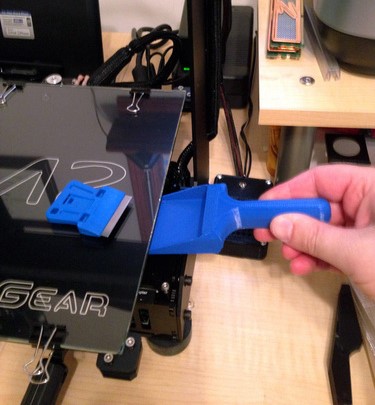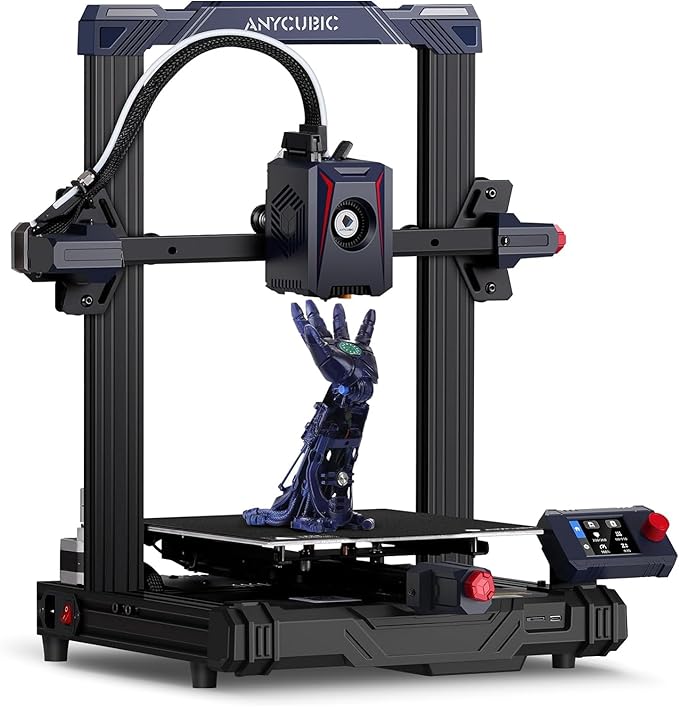What is a Heated Bed in 3D Printing?
A heated bed is essentially a print surface that can be heated to a specified temperature, providing controlled warmth throughout the printing process. It is typically made from materials like aluminum or glass, which are good heat conductors, and it’s paired with a heating element beneath the surface.
The bed heats up before and during the printing process, helping to maintain optimal temperature conditions for the printed material to stick to the bed and for the object to remain stable throughout the print.
What is the Use of a Heated Bed?
The heated bed serves multiple purposes in 3D printing, all of which contribute to improving the quality of prints. Here’s how a heated bed is used:
- Improving Adhesion: A heated bed ensures that the first layer of the print sticks firmly to the bed, preventing the model from moving or shifting during the printing process. This is especially important for large prints that require a strong foundation from the start.
- Reducing Warping: Warping occurs when the edges of a print start to lift from the bed, causing the object to deform. A heated bed helps keep the lower layers warm and minimizes the temperature difference between the bed and the extruded material, which reduces the likelihood of warping.
- Supporting a Variety of Materials: Certain materials, such as ABS, PETG, and nylon, require a heated bed for optimal performance. Without one, the prints made with these materials are prone to warping and adhesion issues.
- Maintaining Print Stability: A heated bed helps prevent the model from contracting or shrinking due to rapid cooling. By maintaining warmth at the base, it reduces stresses that lead to cracks or gaps in the print.
Benefits of Using a Heated Bed
A heated bed comes with numerous benefits that can greatly improve your 3D printing experience, particularly when working with specific materials or more complex designs.
1. Improved Print Adhesion
One of the most significant benefits of using a heated bed is its ability to improve adhesion between the first layer of filament and the print surface. When the bed is heated, the filament stays warm for longer, allowing it to bond more securely to the bed. This reduces the chances of the print peeling off or moving, which is especially important for larger prints.
2. Reduction of Warping and Curling
Warping is a common issue in 3D printing, especially when working with materials like ABS or nylon. Warping happens when
the material cools too quickly, causing it to contract unevenly. A heated bed minimizes the temperature difference between the freshly extruded filament and the print surface, reducing warping and curling around the edges of your print.
3. Wider Range of Materials
Many filaments require the use of a heated bed to produce high-quality prints. Materials like ABS, PETG, and TPU benefit from the stable temperature that a heated bed provides. Without a heated bed, these materials can be difficult to work with, leading to poor print quality and excessive warping.
4. Higher Print Quality
A heated bed can lead to more consistent layer adhesion and overall higher-quality prints. By providing a stable and warm surface, each layer of the print adheres better, resulting in smoother finishes and stronger, more durable prints.
The Importance of a Heated Bed: Why is it Really Required?
While it is possible to 3D print without a heated bed, doing so often results in poor print quality, especially when using materials like ABS, PETG, or nylon. For those who prioritize smooth, warp-free prints, a heated bed is essential. Here are some reasons why a heated bed is so important:
- Ensures First Layer Success: The first layer is arguably the most important layer in any 3D print. A heated bed helps ensure that the first layer adheres properly to the bed, setting the foundation for the rest of the print.
- Required for Certain Materials: Many common 3D printing materials require a heated bed for proper adhesion and to prevent warping. Without a heated bed, printing with these materials is likely to result in failed prints or significant deformation.
- Stability for Long Prints: Long or large prints can take hours or even days to complete. A heated bed helps maintain stability throughout the entire print process, reducing the chance of shifting or lifting during printing.
Will the Heated Bed be Hot or Cold?
A heated bed can reach temperatures ranging from around 50°C to 110°C, depending on the filament being used:
- PLA (Polylactic Acid): Typically prints at a bed temperature of 50°C to 60°C.
- ABS (Acrylonitrile Butadiene Styrene): Requires a bed temperature of 90°C to 110°C to prevent warping.
- PETG (Polyethylene Terephthalate Glycol): A heated bed is set between 70°C to 80°C for best results.
- Nylon: Needs a bed temperature of around 90°C to 110°C for strong adhesion and to minimize shrinkage.
It’s important to keep in mind that the bed will stay hot throughout the print and should be allowed to cool down before removing prints.
Is a Heated Bed Really Required?
For many prints, especially those made from materials like PLA, a heated bed might not be strictly necessary. However, for high-quality, warp-free prints with materials like ABS, PETG, or nylon, a heated bed is crucial. The ability to improve adhesion, minimize warping, and ensure stable printing makes the heated bed an invaluable feature for most users.


















